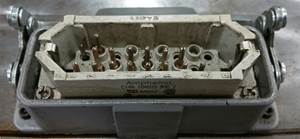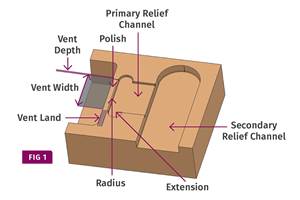Raising the Bar in Multi-Component Molding
Multi-component molding in North America makes up less than 10% of the injection molding ┤¾¤¾┤½├¢, but it is becoming a significant growth strategy for The Tech Group in Scottsdale, Ariz. "Rather than waiting for applications to come to us, which is what custom molders typically do, we are gathering the right technologies now to take our capability to a new level.
Multi-component molding in North America makes up less than 10% of the injection molding ┤¾¤¾┤½├¢, but it is becoming a significant growth strategy for The Tech Group in Scottsdale, Ariz. "Rather than waiting for applications to come to us, which is what custom molders typically do, we are gathering the right technologies now to take our capability to a new level. We intend to push the multi-component envelope in the U.S.," says Bill Gerard, v.p. of operations. The company is investing in two technologies that could give it a lead in multi-component processing: all-electric presses and sophisticated turning-stack molds.
The Tech Group is one of the country's largest custom/contract injection molders. It has 11 molding operations with more than 300 machines, as well as three moldmaking facilities, in the Americas, Europe, and Asia. It serves medical, healthcare, and consumer markets from six plants in the U.S., Mexico, and Puerto Rico that generate revenues of $120 million and operate more than 200 injection presses from 17 to 400 tons.
The Tech Group's ┤¾¤¾┤½├¢ in multi-component molding has been growing by 10% a year for the past few years and is up significantly since 2003. "Five years ago it was zero, but now it makes up a significant fraction of our sales volume in North America," says Gerard. This growth involves high-volume production of complex, tight-tolerance, multi-component parts. They are primarily hard/soft combinations where a soft-touch grip can add value to surgical instruments or ease the handling of pharmaceutical packaging like medicine bottles or consumer goods such as toothbrushes.
Going all-electric
"We have been running two-component hydraulic ma-chines, but we have made a strategic decision to move toward all-electric machines for production of both single- and multi-component parts. The electric presses are very accurate, reliable and clean, and they are energy-saving," says Gerard.
In the last four years, The Tech Group purchased 47 all-electric Fanuc Roboshot presses from Milacron Inc., Batavia, Ohio. It also has nine multi-component machines in North America, and 11 in Europe. Only one is all-electric—a 330-ton Cincinnati Milacron Powerline model with two injection units. It was Milacron's first experience in building an all-electric multi-injection press in North America.
The electric two-component unit is located in Phoenix, Ariz., and a similar unit will soon be delivered to Cidra, Puerto Rico. Both presses are intended to serve new applications. "The all-electric press gives us an operational advantage, since the energy usage is cut nearly in half," Gerard says. "We now have a ┤¾¤¾┤½├¢ plan to go after in-mold assembly and multi-component jobs and the two-component Powerline is a key part of our technology platform," he adds.
Making multi-molds
Another element of that strategy to push the limits of multi-component molding involves use of a relatively new type of high-tech mold. A new neighbor in Scottsdale is Gram Technology, a Danish firm that developed Spin Stack mold technology, which involves multiple four-faced, rotating stacks between the fixed and moving platens. That technology can accommodate injection of two or more materials as well as in-mold assembly and coating operations. The Tech Group, which builds about 25% of its tools in-house, has taken a license from Gram to build Spin Stack molds.
"Use of multi-component molds has spurted from zero to 20% of the company's tooling output in just two years," says Gerard. "Our in-house tool-making strategy is to take on the molds that would be too risky or expensive for outside shops," says Gerard.
Related Content
Three Key Decisions for an Optimal Ejection System
When determining the best ejection option for a tool, molders must consider the ejector’s surface area, location and style.
Read MoreHot Runners: How to Maintain Heaters, Thermocouples, and Controls
I conclude this three-part examination of real-world problems and solutions involving hot runners by focusing on heaters, thermocouples, and controls. Part 3 of 3.
Read MoreUsing Data to Pinpoint Cosmetic Defect Causes in Injection Molded Parts
Taking a step back and identifying the root cause of a cosmetic flaw can help molders focus on what corrective actions need to be taken.
Read MoreBack to Basics on Mold Venting (Part 2: Shape, Dimensions, Details)
Here’s how to get the most out of your stationary mold vents.
Read MoreRead Next
Making the Circular Economy a Reality
Driven by brand owner demands and new worldwide legislation, the entire supply chain is working toward the shift to circularity, with some evidence the circular economy has already begun.
Read MoreSee Recyclers Close the Loop on Trade Show Production Scrap at NPE2024
A collaboration between show organizer PLASTICS, recycler CPR and size reduction experts WEIMA and Conair recovered and recycled all production scrap at NPE2024.
Read More










